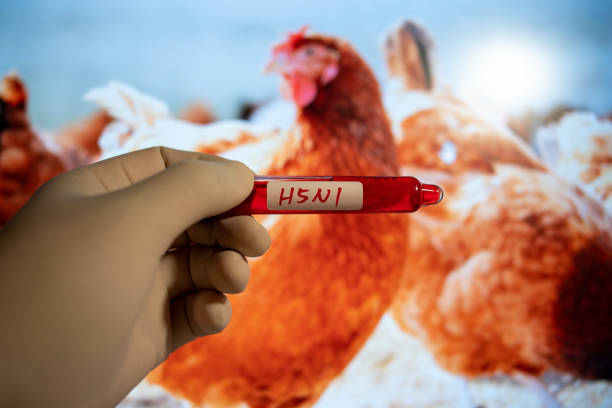PROTECT YOURSELF AND OTHERS: PREVENT BIRD FLU WITH SIMPLE STEPS!

PROTECT YOURSELF AND OTHERS: PREVENT BIRD FLU WITH SIMPLE STEPS!
SUMMARY
Bird flu is a contagious viral disease that can spread from birds to humans. This guide outlines essential strategies to prevent bird flu by avoiding exposure to infected birds, practicing hygiene, and maintaining safe environments.
FEATURES
- Avoid Contact with Wild Birds: Stay away from areas with wild birds, especially during outbreaks.
- Handle Poultry Safely: Practice safe handling and cooking of poultry to prevent infection.
- Wear Protective Gear: Use gloves and masks when handling birds or cleaning bird-related areas.
- Maintain Hygiene: Wash hands thoroughly after contact with birds or their droppings.
- Vaccinate Poultry: Ensure poultry are vaccinated against bird flu to reduce transmission risks.
- Monitor for Symptoms: Stay alert to signs of bird flu in both humans and birds and seek medical advice if necessary.
DESCRIPTION
Bird flu, or avian influenza, is a viral infection that can spread from birds to humans, causing serious illness. Preventing bird flu is crucial, especially for people who work with birds, live near wild birds, or raise poultry. Here are some effective ways to reduce your risk of contracting bird flu.
The first step in prevention is to avoid contact with wild birds, especially during known outbreaks of bird flu. Wild birds, particularly waterfowl and migratory species, are often carriers of the virus. If you live near wetlands, bird sanctuaries, or areas where migratory birds gather, avoid unnecessary exposure and stay vigilant during outbreaks.
If you handle or work with poultry, it's important to handle poultry safely. Make sure to wear gloves and masks when dealing with chickens, ducks, or other domesticated birds, especially if they show signs of illness. Ensure all poultry is properly cooked before consumption, as bird flu can be transmitted through contaminated meat or eggs.
When working with birds or cleaning bird cages or droppings, it's essential to wear protective gear. Gloves, masks, and protective clothing can help reduce the risk of coming into contact with the virus. This is particularly important if you're handling sick or dead birds.
Good hygiene practices can also significantly lower the risk of bird flu transmission. Maintain hygiene by thoroughly washing your hands with soap and water after any interaction with birds, their droppings, or potentially contaminated surfaces. Alcohol-based hand sanitizers can also be used as an additional precaution.
For those who raise poultry, it's important to vaccinate poultry against bird flu when possible. Vaccination programs can reduce the spread of the virus within flocks, minimizing the chance of transmission to humans.
Finally, it’s crucial to monitor for symptoms of bird flu in both humans and birds. If you or someone you know experiences flu-like symptoms after contact with birds, seek medical advice immediately. Symptoms of bird flu can include fever, cough, sore throat, muscle aches, and sometimes more severe respiratory issues. If birds in your care appear lethargic, stop eating, or show other unusual behaviors, contact a veterinarian to check for bird flu.
By following these guidelines, you can protect yourself, your family, and your animals from the risks of bird flu. Staying informed, practicing hygiene, and being cautious around birds are key steps in preventing the spread of this virus.
- Tags: Bird Control Guide
- Maanas Mehta


Comments 0